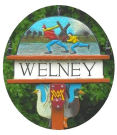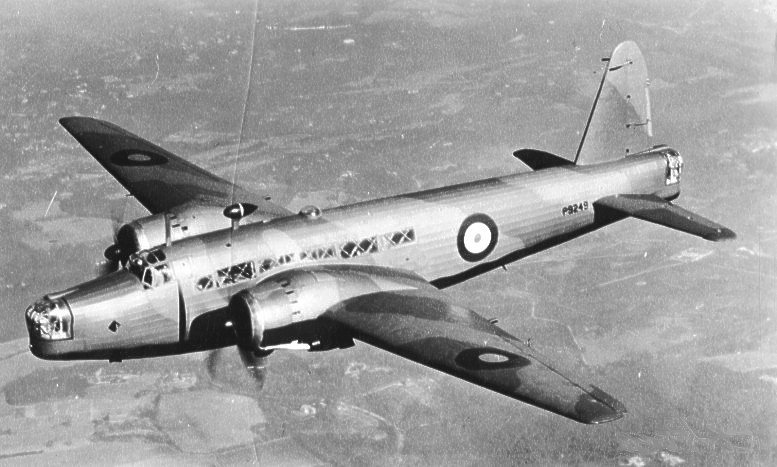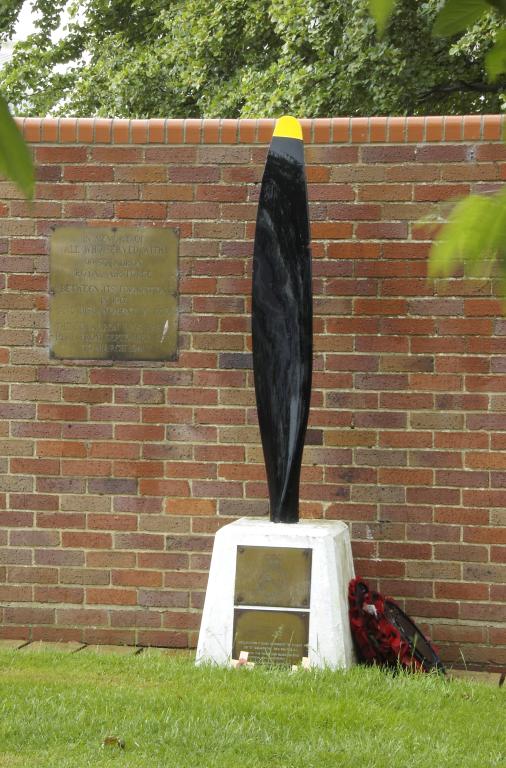
The Welney Website
Wellington T2888 crash, Feb 1941
page created 31st July 2010; last updated Thursday, 09 October 2014

|
WW2 aircraft identities The aircraft's serial number (T2888) is the unique number given by the maker. Fuselage code marks were used by various air forces to identify the country, operational unit, and the individual aircraft within that unit. The code for T2888 was "R-LN". The "-" sign indicates the RAF roundel, "LN" the unit (99 squadron) and "R" the plane's reference in that unit. It's call sign was the latter used with the phonetic alphabet, hence "R - Robert". Photos and further explanations see my crashes index page. |
INTRODUCTION
The Wellington was a twin-engine medium bomber built by Vickers -Armstrong at Weybridge, Surrey. Serial number T2888 was a Mk. 1c version as used by Bomber Command during 1940-1943.An earlier posting on this website incorrectly stated that a Wellington may have crashed on the Welney washes on 10th February 1941. However a website visitor suggested that the incident involved a Wellington bomber returning from a mission on the 11/12th February.
"On the night of the 11th/12th Feb 1941, 99 Squadron Wellington Mk1 R-LN "R" for Robert (T2888) lifted off from Newmarket on a sortie to Bremen, on board were Sgt Pilot Robinson, Sgt D N Beal, Sgt A R Clough, on return to the UK the area was found to be fogbound, after trying to locate their position for some time the aircraft finally ran out of fuel somewhere to the east of Wisbech, Cambridgeshire, the order was given to abandon the aircraft and the 3 men jumped.Webmasters note: unfortunately I have mislaid the source contact details, but I believe it was someone at the Fenland Aircraft Museum (Bill Welbourne?. My apologies.).
Later it was found that sadly Sgt A R Clough had drowned in one of the many drains and dykes of the area. Meanwhile the empty Wellington crashed about 5 miles south of Wisbech on land near Stags Holt, the aircraft buried itself deep in the soft ground.
Forty one years later I was part of the team set to recover the remains of this Aircraft .............. parts are on display at the Fenland Aircraft preservation museum near Wisbech, One of the propeller blades is now mounted on a plinth at the entrance to the Jockey club Newmarket (The home of 99 Squadron)."
|
The crew of T2888 on 11th Feb 1941 as shown in 99 Sqn RAF Operational Records Book
P.O.Thain and Sgts Brown & Robinson survived. No info about Sgt Welch |

propeller memorial at Newmarket
source www.racns.co.uk/images/su/sufhne015/
Ernie James' memories
The late Ernie James was a Welney wildfowler and operator for many years of the ferry service across the Welney Washes when the A1101 main road was flooded in winter. He told of his involvement in this incident in a book 'Memoirs of a Fen Tiger' written by his daughter-in-law some 45 years later.Ernie, who would have been about 35 in 1941, and 80 years old when the book was written, lived in a cottage between two rivers on the western side of the washes, and recalled being woken one foggy night in 1941 at about 2 a.m. by an aeroplane "flying backwards & forwards". Shortly afterwards he thought he heard a cry of "help" and opened the front door to listen, but heard nothing more. He said that next morning he was told by a "Major Wray" of the Welney Home Guard that the crew of a Wellington bomber baled out [over the Welney washes] because the plane was running out of fuel. One of the crew, the last to jump, managed to get to Welney village and had been taken to the Home Guard office, the other two were missing. [webmaster's note: for more of "Major Wray" and the survivor's story see below]
Ernie goes on to say that he found the body of one of the missing men, Sgt Clough, the following morning, in the water dead from exposure. He searched for the third airman many times, and on 16th April eventually saw his body in the water. He contacted the police, and together they recovered the body.
Ernie continues by saying that some of the Home Guard received medals for finding the bodies (which Ernie obviously thought, but didn't actually say in the book, was unfair, as it was he that found them). He also said that if any of the Home Guard on duty that night had come to him he would have gone out in his boat, and may have saved the airmen.
After the flood waters receeded, Ernie found a rip-cord handle and guessed it might be the survivors. He reported his find, and the airman came to collect it. Ernie does not give a name or any further details; presumably it was the pilot, Sgt Robinson.
LATER RESEARCH and INFORMATION
Further research in Aug 2010 has revealed that the Ops Record Book of 99 Sqn shows that T2888 took off from Newmarket Heath at 18.35 hrs on the 11th and the order to abandon the aircraft was given on return from Bremen at 21.40 when at 5,500 ft over 'Ely district'. P.O. Thain and Sgts. Robinson and Brown are later shown back on operational duty with 99 Sqdrn in T2997 on 2nd March 1941. No further info at present regarding Sgt. Welch.The plane crashed about 3 miles NNE of the centre of March, Cambridgeshire, on farmland near White House Farm and Stags Holt Farm.
COMMENT
Ernie James' told of being woken about 2 a.m. by a plane flying "backwards and forwards". We now know it wasn't T2888 as that crashed some 4 hours earlier. Could it be that he actually heard a plane circling overhead looking for survivors? There is no record of an air search by 99 Sqn, but it is possible that a non-operational craft from one of the many airfields near Welney could have been despatched, assuming the fog had lifted? Jeff Carless of East Anglian Aircraft Research group thinks not, pointing out that 18 returning aircraft crashed that night because of the unexpected fog, and the plane Ernie heard is likely to have been yet another one searching for an airfield.| Ernie James talked of a "Major Wray" of the Welney Home Guard. Ernie's nephew, Raymond, referred to the officer as "Charlie Ray, the local schoolmaster, and Captain of the Home Guard" when recalling another crash, that of a German arcraft, a few months later. Ray is the correct spelling of the schoolmasters name, and Captain would have been the appropriate rank. The Home Guard were not generally awarded medals, something many complained of after the war.) |
A survivor's story
Pending completion.LINKS to sources and/or related web pages
There was much more information about 99 Squadron during WW2 at Newmarket (and other locations) at the 99 Squadron Veterans Group and Association website including photos of T2888 ('R.Robert'). However when I tried the link (right) in Oct 2014, the site was unavailable. The History Journal had a graphic account of a similar Wellington crash in UK, but is also now unavailable.|
Acknowledgements.
Extracts from 99 Sqdrn RAF
Operational Records Books
kindly supplied by Martin Bond.
The webmaster is grateful to
Michael Harrison
for obtaining the info. Extracts from a book by Audrey James: 'Memoirs of a Fen Tiger' the story of Ernie James. Published 1986 by David & Charles. |